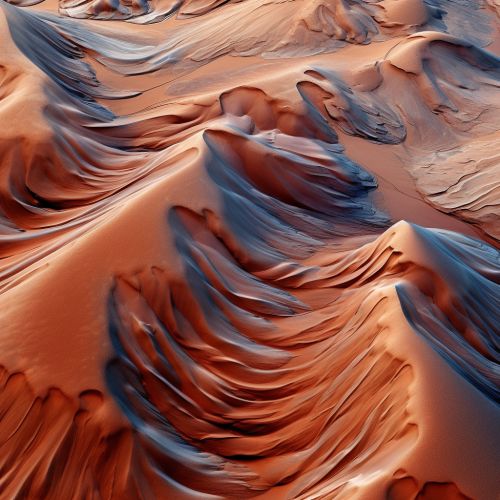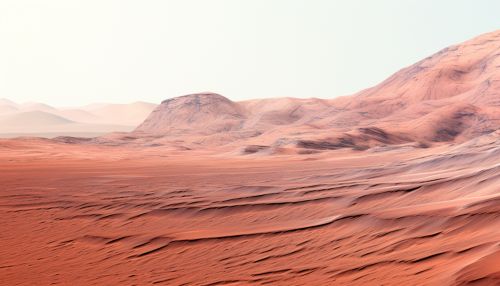Mars
Introduction
Mars, also known as the Red Planet, is the fourth planet from the sun in our solar system. It is the second smallest planet in the solar system, after Mercury. Named after the Roman god of war due to its reddish appearance, Mars is a terrestrial planet with a thin atmosphere, having surface features both of the moon and the earth.
Physical Characteristics
Mars is approximately half the diameter of Earth with a surface area only slightly less than the total area of Earth's dry land. Mars is less dense than Earth, having about 15% of Earth's volume and 11% of Earth's mass, resulting in about 38% of Earth's surface gravity. The red-orange appearance of the Martian surface is caused by iron(III) oxide, or rust.
Geology
The geology of Mars is the scientific study of the surface, crust, and interior of the planet Mars. It emphasizes the composition, structure, history, and physical processes that shape the planet. It is analogous to the field of terrestrial geology. In planetary science, the term geology is used in its broadest sense to mean the study of the solid parts of planets and moons.


Climate
The climate of Mars has been a topic of scientific curiosity for centuries, in part because Mars is the only terrestrial planet whose surface can be directly observed in detail from the Earth. Mars has a thin atmosphere, with the surface pressure less than 1% of Earth's. It has the largest dust storms in the solar system, lasting for months and covering the entire planet.
Orbit and Rotation
Mars orbits the Sun at an average distance of 1.52 AU; it takes about 687 Earth days to complete one orbit. The rotational period and seasonal cycles of Mars are likewise similar to those of Earth.
Moons
Mars has two moons, Phobos and Deimos, which are small and irregularly shaped. These may be captured asteroids, similar to 5261 Eureka, a Mars trojan.
Exploration
Mars has been explored by several uncrewed spacecraft, beginning with the Mariner and Viking series of spacecraft in the 1960s and 1970s. Mars exploration has been continued by the Mars Global Surveyor, Mars Odyssey, Mars Express, Mars Reconnaissance Orbiter, Mars Science Laboratory, Mars Atmosphere and Volatile Evolution (MAVEN), and the Mars Orbiter Mission.
Habitability and Life
The current understanding of planetary habitability—the ability of a world to develop environmental conditions favorable to the emergence of life—favors planets that have liquid water on their surface. Most often, life as we understand it requires certain environmental conditions, among them a watery environment. On Mars, the search for this life begins with water.
